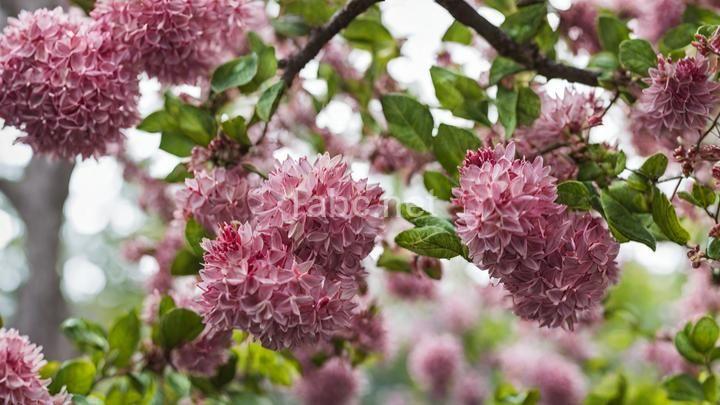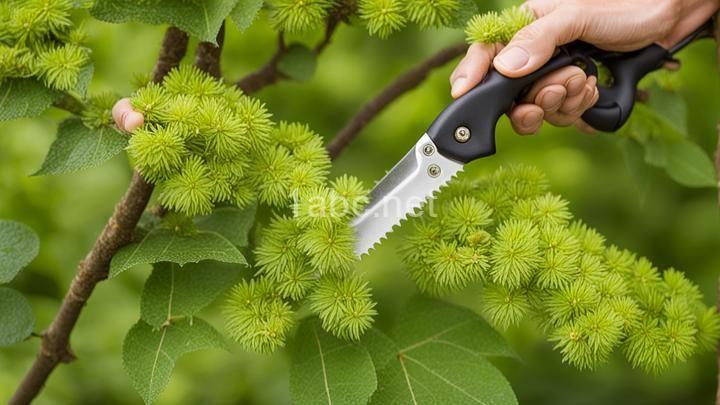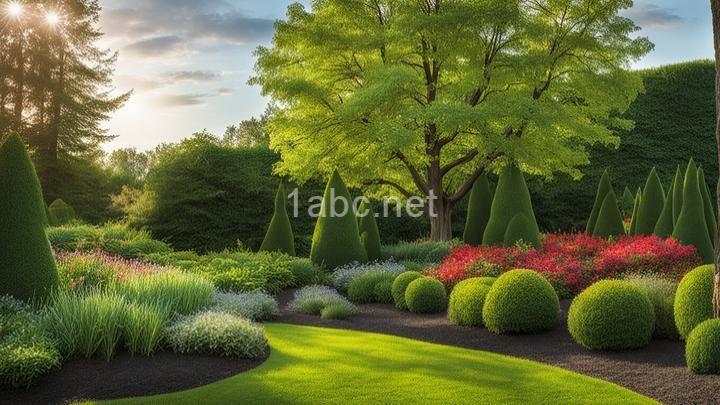How to Choose the Right Tree or Shrub for Your Garden

Introduction:
Hey there, fellow garden enthusiasts! Welcome to the world of choosing the perfect trees and shrubs for your garden. We know how important it is to select the right plants to ensure a successful and thriving garden. So, let's dive into the wonderful world of gardening and learn how to make the best choices for your green space.
I. Assessing Your Garden's Needs:
Before you start browsing through nurseries like a kid in a candy store, take a moment to assess your garden's needs. Just like each person is unique, every garden has its own set of requirements. Factors like sunlight, soil type, space availability, and climate play a vital role in determining which trees and shrubs will flourish in your garden.
To evaluate your garden's needs, take a stroll and observe the sunlight patterns throughout the day. Note areas that receive full sun, partial shade, or full shade. Different plants have different sunlight requirements, so it's crucial to match them with the appropriate spots in your garden.
Next up, let's talk soil. Get your hands dirty and examine the soil type in your garden. Is it sandy, loamy, or clayey? Different plants have different preferences when it comes to soil, so determining your soil type will help you select plants that will thrive in your specific garden conditions.
Space availability is another essential factor to consider. Measure the dimensions of your garden beds and take note of any existing structures or pathways that could affect plant placement. This will ensure that you choose trees and shrubs that won't outgrow their allocated space or obstruct any walkways.
Lastly, consider the climate in your region. Are you in a hot and dry area, or does it rain more often than not? Understanding the climate will help you select plants that are well-suited to your area's weather conditions and will be able to withstand the elements.
Creating a checklist based on these factors will serve as your personalized guide while shopping for trees and shrubs. Remember, a little planning goes a long way in creating a garden that thrives!
II. Researching Suitable Options:
Now that you have a clear understanding of your garden's needs, it's time to dive into the exciting world of plant research. Get ready to explore the vast variety of tree and shrub species that thrive in your region.
One tip we highly recommend is to consider native plants. Why, you may ask? Well, native plants are like the local celebrities of the gardening world. They have adapted to the local climate and soil conditions over time, making them more resilient and sustainable. Plus, supporting local biodiversity is always a win-win!
To gather information about suitable options, there are several resources available. Online platforms like gardening websites and forums provide a wealth of information on plant characteristics, care tips, and even user reviews. Books on gardening specific to your region can also be a great source of knowledge. And let's not forget about the good old-fashioned brick-and-mortar gardening centers, where you can chat with knowledgeable staff and get hands-on advice.
So, arm yourself with a cup of tea and your favorite gardening tools (we recommend a laptop or a good book), and start researching the plants that will bring your garden to life.
III. Considering Garden Aesthetics:
A visually appealing garden is like a work of art, so it's important to consider how your chosen trees and shrubs will complement the overall aesthetic. Think of your garden as a canvas, and the plants as the brushstrokes that create a masterpiece.
When selecting trees and shrubs, aim for a mix of heights, foliage colors, textures, and blooming seasons. This will add depth and visual interest to your garden. Imagine the vibrant burst of color from spring blossoms, followed by the lush greenery of summer, and the fiery hues of autumn. It's like having your own little seasonal fashion show in your backyard!
Additionally, consider any existing design elements or themes in your garden. If you have a Japanese-inspired garden, you might want to choose trees and shrubs that align with the minimalist, Zen aesthetic. On the other hand, if you have a cottage garden, go wild with a mix of colorful blooms and whimsical shrubs.
Remember, your garden is an expression of your creativity and personal style. So, have fun with it and let your imagination run wild!
IV. Maintenance Requirements:
Now that you have your eye on some potential plant candidates, it's time to think about the maintenance they'll require. Just like a pet, trees and shrubs need love and care to thrive.
Understanding the maintenance needs of your chosen plants will help you make an informed decision. Consider factors like watering frequency, pruning techniques, fertilization requirements, and any special care instructions. Some plants are more high-maintenance, while others are a breeze to care for. If you're short on time or prefer a low-maintenance garden, opt for plants that require minimal attention.
Pro tip: Invest in some quality gardening tools to make your maintenance tasks easier. A good pair of pruning shears, a sturdy watering can, and some organic fertilizer will go a long way in keeping your plants happy and healthy.
V. Seeking Professional Advice:
Sometimes, even the most seasoned gardeners need a little extra guidance. That's where the experts come in! We encourage you to consult with local horticulturists or arborists for professional recommendations tailored to your specific garden conditions.
Local experts have a wealth of knowledge and experience, and they can provide valuable insights into which trees and shrubs will thrive in your area. They can also offer guidance on specific care techniques, tackling pests or diseases, and any other gardening conundrums you may encounter.
Seeking professional advice not only ensures long-term success with your plant selection but also gives you the confidence to tackle any gardening challenges that come your way.
Conclusion:
Congratulations, dear gardeners, you've made it to the end of our guide on choosing the right trees and shrubs for your garden! We've covered everything from assessing your garden's needs to considering aesthetics, maintenance requirements, and seeking professional advice. Armed with this knowledge, you're ready to embark on your journey of creating a thriving and visually appealing garden.
Remember, gardening is a labor of love. It's a chance to connect with nature, express your creativity, and create a sanctuary right in your own backyard. So, have fun, experiment, and don't be afraid to get your hands dirty. Happy gardening!
FREQUENTLY ASKED QUESTIONS
What factors should I consider when choosing a tree or shrub for my garden?
When choosing a tree or shrub for your garden, there are several factors to consider. First, think about the climate in your area. Different trees and shrubs thrive in different climates, so it's important to choose one that is well-suited to your region.Next, consider the size of your garden. Some trees and shrubs can grow quite large, while others stay more compact. Make sure to choose a plant that will fit comfortably in your space without overcrowding.
Another factor to think about is the purpose of the tree or shrub. Are you looking for something to provide shade, add privacy, or simply enhance the aesthetic appeal of your garden? Knowing the specific purpose will help you narrow down your options.
Additionally, consider the maintenance requirements of the tree or shrub. Some plants require regular pruning, while others are more low-maintenance. Make sure you're willing and able to provide the necessary care for your chosen plant.
Lastly, don't forget to take into account any specific soil or sunlight requirements. Certain trees and shrubs prefer specific soil types or need a certain amount of sunlight to thrive. Take note of these requirements and choose a plant that matches your garden's conditions.
By considering these factors - climate, size, purpose, maintenance, and specific requirements - you'll be able to choose a tree or shrub that will thrive in your garden and bring beauty to your outdoor space.
How can I determine the appropriate size of the tree or shrub for my garden?
To determine the appropriate size of a tree or shrub for your garden, there are a few factors to consider. First, you'll want to assess the available space in your garden. Measure the area where you plan to plant the tree or shrub, and take note of any nearby structures or plants that could affect its growth.Next, consider the purpose of the tree or shrub. Are you looking for something that will provide shade, privacy, or simply add aesthetic appeal to your garden? This will help you determine the ideal height and spread for your plant.
Another important factor is the growth rate of the tree or shrub. Some species grow quickly and can quickly outgrow their designated space, while others have a slower growth rate and may take longer to reach their full size. Research the specific species you're interested in to get an idea of how quickly it will grow and whether it's suitable for your garden.
It's also worth considering the maintenance requirements of the tree or shrub. Some plants require regular pruning to maintain their size and shape, while others are more low-maintenance. If you're not keen on spending a lot of time on upkeep, choose a species that fits your desired level of maintenance.
Lastly, don't forget to take into account the overall design and aesthetic of your garden. Consider how the tree or shrub will fit in with the other plants and features in your garden. Will it complement the existing landscape, or will it appear out of place?
By considering these factors, you can determine the appropriate size of a tree or shrub for your garden and ensure that it will thrive in its designated space.
What are some tree and shrub varieties that are suitable for different climate zones?
When it comes to selecting tree and shrub varieties for different climate zones, there are several options to consider. Here are some varieties that are suitable for various climate zones:
1. Cold Climate Zones:
- Spruce (Picea spp.): These evergreen trees are well-suited for cold climates and provide year-round beauty.
- Red Maple (Acer rubrum): This deciduous tree is known for its stunning fall foliage and can withstand cold winters.
- Potentilla (Potentilla fruticosa): A hardy shrub that produces colorful flowers in cold climates.
2. Hot Climate Zones:
- Desert Willow (Chilopsis linearis): This heat-loving tree thrives in hot, arid regions and produces beautiful trumpet-shaped flowers.
- Bougainvillea (Bougainvillea spp.): These vibrant shrubs are perfect for hot climates, offering a burst of color with their showy bracts.
- Lantana (Lantana camara): A popular shrub that thrives in hot climates and attracts butterflies with its colorful blooms.
3. Coastal Climate Zones:
- Coast Live Oak (Quercus agrifolia): A native tree to coastal areas, it is well-adapted to salt spray and coastal winds.
- Sea Buckthorn (Hippophae rhamnoides): This shrub is salt-tolerant and can thrive in coastal environments.
- Monterey Cypress (Cupressus macrocarpa): A resilient evergreen tree that can withstand coastal winds and salt spray.
4. Mediterranean Climate Zones:
- Olive (Olea europaea): An iconic tree in Mediterranean climates, it thrives in sunny and dry conditions.
- Rosemary (Rosmarinus officinalis): This aromatic shrub is well-suited to Mediterranean climates and adds fragrance to gardens.
- Lavender (Lavandula spp.): A popular choice for Mediterranean climates, lavender thrives in sunny and well-drained locations.
Remember, while these varieties are well-suited for their respective climate zones, it's essential to consider other factors such as soil type, sun exposure, and water requirements to ensure their success in your specific location. It's always a good idea to consult with local gardening experts or nurseries for personalized recommendations based on your climate zone.
How do I know if a tree or shrub is suitable for the amount of sunlight in my garden?
To determine if a tree or shrub is suitable for the amount of sunlight in your garden, there are a few key factors to consider. First, you need to assess the amount of sunlight your garden receives throughout the day. Is it a full sun, partial shade, or full shade area? This will help you identify the type of plants that thrive in those conditions.
Next, research the specific sunlight requirements of the tree or shrub you are interested in. Different plants have different needs when it comes to sunlight. Some thrive in full sun, while others prefer partial shade or full shade.
Consider the size of the tree or shrub at maturity. Taller trees may cast shade on other plants, so it's important to choose varieties that can tolerate lower light levels if your garden is not in full sun.
Additionally, take note of any nearby structures or trees that may create shade or block sunlight. These factors can impact the amount of sunlight your garden receives, so it's important to consider them when selecting plants.
Lastly, consult with a local nursery or gardening expert who can provide guidance based on your specific location and climate. They will have knowledge about which trees and shrubs are best suited for the sunlight conditions in your area.
By taking these factors into consideration, you can ensure that the trees and shrubs you choose are suitable for the amount of sunlight in your garden.

